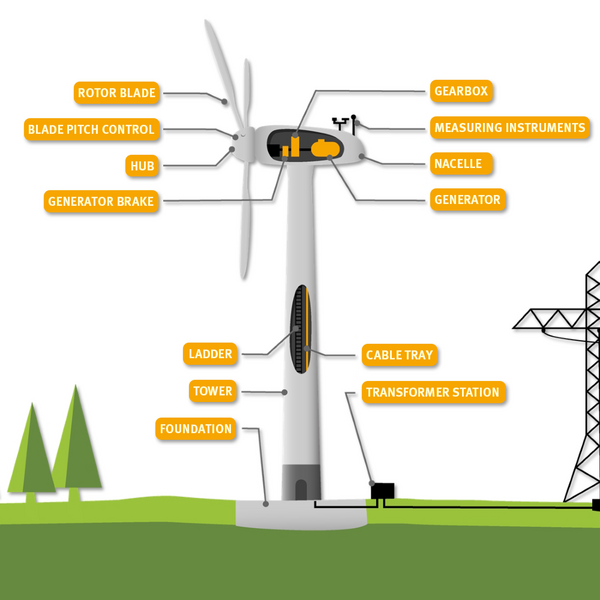Wind Power
Wind power through the use of wind turbines has become one of the most popular ways for our partners to get involved in the clean energy transition.
Wind energy, or wind power, refers to creating electricity using the wind or air flows that occur naturally around us. Modern wind turbines are used to capture kinetic energy from the wind and generate electricity.
There are three main types of wind energy:
- Utility-scale wind. This type of energy requires wind turbines that range in size from 100 kilowatts to several megawatts. The electricity that is created is delivered to the power grid and distributed to the end user by electric utilities or power system operators.
- Distributed or "small" wind. This energy requires single small wind turbines below 100 kilowatts. These small turbines are typically not connected to the grid and are used to directly power a home, farm or small business.
- Offshore wind. This type of energy requires wind turbines to be built in large bodies of water, usually on the continental shelf. Offshore wind turbines are larger than land-based turbines and can generate more power.
The recognizable shape is made of a tubular steel tower that supports a hub with three attached blades. This hub, called a “nacelle,” houses the gearbox, generator, and controls. When wind measurements are collected, the turbine is directed to rotate and face the strongest wind, and change the angle or "pitch" of its blades to optimize energy capture.
A typical modern turbine will start to generate electricity when wind speeds reach six to nine miles per hour, or what we like to call the cut-in speed. Turbines will shut down if the wind is blowing too hard, roughly 55 miles per hour, to prevent equipment damage.
Over the course of a year, modern turbines can generate usable electricity more than 90 percent of the time. This is because a wind turbine will start generating electricity once the wind around it reaches cut-in speed and will increase its energy production as the wind speed around it increases.
Another common measure of wind energy production is called capacity factor. This measures the amount of electricity a wind turbine produces in a given time period (typically a year) relative to its maximum potential. For example, suppose the maximum potential output of a two megawatt wind turbine in a year is 17,520 megawatt-hours (two times the number of hours in a year). But, the turbine may only produce 7,884 megawatt-hours over the course of the year because the wind wasn’t always blowing hard enough to generate the maximum amount of electricity the turbine was capable of producing. In this case, the turbine has a 45 percent capacity factor, as it was only producing 45 percent of its maximum potential output. It’s important to remember this does not mean the turbine only generated electricity 45 percent of the time, rather the turbine has the potential to produce more electricity with stronger wind. Modern wind farms often have capacity factors greater than 40 percent.
UKA is committed to honesty and quality through every step of the renewable energy development process.
Contact us today to learn more about becoming a UKA partner.

